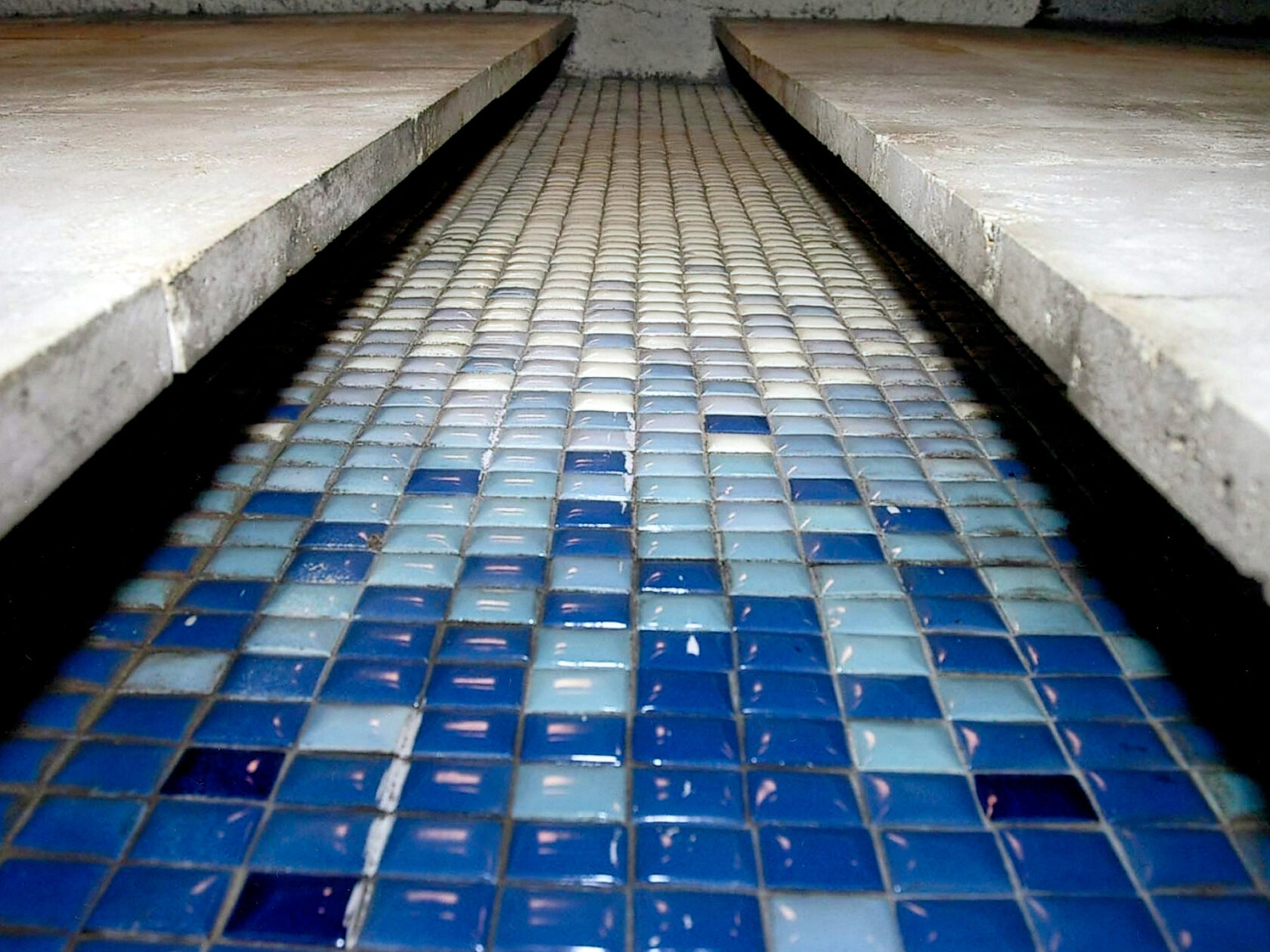Mosaic decorations of the Warszawa Śródmieście Railway Station entered in the Register of Monuments
-
Dates
December 18, 2021
Add to calendar - Venue Warszawa Śródmieście Railway Station
- Register No. 1611
External links Wojciech Fangor Archive

A complex of mosaic decorations by Wojciech Fangor located in the underground part of the Warszawa-Śródmieście Railway Station has been entered in the register of movable monuments of the Mazovian Voivodeship. Due to their artistic and scientific value, the entry includes 52 ceiling mosaics and 27 wall mosaics.
Substantiation by Prof. Jakub Lewicki – Mazovian Voivodship Conservator of Monuments:
“I have decided to enter in the register of movable monuments of the Mazovian Voivodeship the complex of mosaic decorations by Wojciech Fangor, located in the underground part of the Warsaw-Śródmieście Railway Station at Jerozolimskie Avenue 50, due to their artistic and scientific value. This entry includes 52 ceiling mosaics located above three platforms and 27 wall mosaics located in the halls and rooms of former waiting rooms along the side platforms and in the passageways to the central platform.
The design for the arrangement of the underground part of the Warszawa-Śródmieście Railway Station was developed by a team from the Artistic and Research Department of the Academy of Fine Arts under the direction of Jerzy Sołtan and Zbigniew Ihnatowicz, commissioned by Biuro Projektów Budownictwa Kolejowego. The author of the overall concept of the abstract mosaic compositions was Wojciech Fangor. The decorations were also designed by Stanisław Kucharski, in collaboration with Viola Damięcka and Jolanta Bieguszewska. All the mosaics consist of glazed ceramic elements measuring 4 x 3 cm, made at the Fajansu factory in Włocławek, partly using pigments imported from Italy, and the Lechi Helena Grześkiewicz family was responsible for the technological process and the final form of the ceramics. Some of the decorations bear the signatures of the factory: ZAKŁADY / FAJANSU / WŁOCŁAWEK.
The mosaic decoration of the station consists of two sets – the under-ceiling mosaics located above the three platforms and the wall mosaics incorporated into the vertical gaps in the walls between the stone cladding panels. According to the scheme, red, orange and yellow were to signal the eastern direction, while blue and green were to signal the western direction. In this way, the decorations aided orientation in space and guided travellers through the traffic routes within the station. Contrasting elements were also introduced to break up the overly uniform tones in the individual zones. Exceptionally, above the central platform, which serves disembarking passengers, the rhythm of the mosaics changes from red to blue halfway along the platform.
The ceramic compositions show echoes of the painterly explorations of Wojciech Fangor, an artist whose work is situated in the international trend of optical art (op-art). The compositional scheme of the decorations shows a kinship with the paintings created from the late 1950s, in which the artist obtained the characteristic effect of colour vibration through smooth transitions between colours applied in a concentric or wavy pattern. The above-mentioned painting experiences of Fangor, in conjunction with research into the perception of movement undertaken at the Artistic and Research Establishments, contributed to the innovative idea of integrating the decoration with the station space. The designers intended the mosaics to be a tool for visual impact, both on travellers staying at the station and those viewing the wall decorations from the windows of a moving train.
The mosaic decorations of the Warszawa-Śródmieście railway station, entered in the register of historical monuments, are the work of the team of the Artistic and Research Department of the Academy of Fine Arts in Warsaw, whose realisations are a highly original phenomenon of the 1950s and 1960s. The team of the Academy of Fine Arts brought together outstanding personalities of Polish architecture, art and design, which was reflected in the quality and innovation of the realised project, taking into account the material and aesthetic concept of the decorations, their lighting, visual information, as well as kinetic-visual studies. At the same time, due to the scant degree of preservation of the most important realisations of this group, especially the plastic solutions of the interiors, this collection of decorations is a unique object of great cognitive value. The mosaic compositions, carefully thought out in terms of form, with nuanced and varied colour combinations, present undeniable artistic value. The mosaics not only individualise and enliven the various sectors of the station, but also emphasise the clear structure of its interior and allow a better orientation in space. The above concept, associated with attempts to compose visual stimuli holistically, enhances the aesthetic and scientific value of the arrangement, being a manifestation of a modern, interdisciplinary approach to design in the Academy of Fine Arts environment.
At the same time, the creation of the decoration illustrates the complex process of its realisation, which involved outstanding artists specialising in various fields, such as Wojciech Fangor, one of the most outstanding individualities of post-war art, or Helena and Lech Grześkiewicz, highly regarded creators of monumental art”.